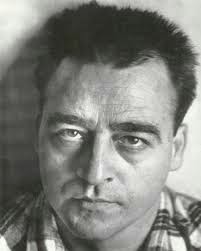 “The capacity to learn is a gift; the ability to learn is a skill; the willingness to learn is a choice.”
“The capacity to learn is a gift; the ability to learn is a skill; the willingness to learn is a choice.”
― Brian Herbert
American Novelist
1947 -
Commentary
I am surprised every time I meet someone who shows no interest in learning. For me, life is about learning new ideas, new techniques and new information. If I lived a hundred lifetimes, I would never learn all there is to learn.
Creative leaders should develop a habit of lifelong learning. Each new piece of information we learn has the potential to connect with an old piece of information that allows us to develop a new idea, a new way of looking at the world and even a new invention.
There are many ways of learning new ideas. One of my favorite is through books. Books have so much to teach us. Have you developed a habit of daily reading? How many books do you read a year? I am reading over 40 at the current moment. I am always looking for the next book to read. And I think you should read what you like to read. I love to read novels and poetry, and I also read history, biographies and memoirs.
Some people learn by meeting new people and learning their stories. Every person has a story to tell. I love to find people who have a story to tell about the industry they work in or the people they've met or the places they have been. People are so fascinating. Meeting people, though, is not about talking. It is about listening.
Another way to learn is by doing new things and by going new places. Trying something new like water skiing or surfing can open up new avenues of thought. I am not the best of people to try doing new things. I am afraid to fail. Perfectionism raises its ugly head. So I often avoid trying. On the other hand I have traveled to many places and seen many new things that open the eyes.
Some people learn best by watching what is going on around them and imitating what they see. They absorb lots of information with their eyes. I learn some information with my eyes, but often I don't pay attention to the physical world. I am too absorbed in my own thinking. I admire people who see with their eyes.
Learning is a choice we all make. Some of us choose to grow and develop our abilities. Others choose to stagnate and die. What choice have you made?
Biography
Brian Herbert is the oldest son of Frank Herbert, the famous science fiction writer and author of Dune. Following in his father's footsteps, Brian has written several science fiction novels. He has written several novels with Kevin J. Anderson that explore the worlds and history of Dune in greater detail.
Brian graduated from high school at sixteen and earned a B.S. degree in Sociology from UC-Berkley. He is married with three daughters.
Video:
Here are Brian Herbert and Kevin J. Anderson discussing their writing.







